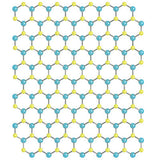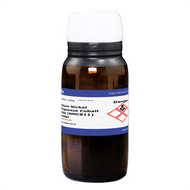Low Dimensional Materials

Low dimensional materials exhibit reduced dimensions compared to their bulk counterparts. These materials include two-dimensional (2D) systems like graphene and transition metal dichalcogenides (TMDs), and one-dimensional (1D) systems like carbon nanotubes and nanowires.
The low dimensionality is a result of a thinness in one or more dimensions. This thinness gives the material unique properties and potential applications particularly in energy storage and next generation electronics.
Features and Applications
- With a high surface area compared to their volume, low dimensional materials are ideal for applications requiring high surface-to-volume ratios. These include energy storage devices such as batteries and supercapacitors.
- Exceptional mechanical and electrical properties. Graphene, for example, is renowned for its extraordinary strength and electrical conductivity.
- Quantum effects can arise from the low dimensionality. This allows for the exploitation of quantum properties, such as quantum confinement and quantum tunnelling, which can lead to new phenomena and applications.
Low dimensional materials are paving the way for a new era in materials science. As research in this field advances, we can anticipate even more ground-breaking discoveries and applications, further cementing the importance of these extraordinary materials in our everyday lives.
Jump to: Low Dimensional Material Collections | Browse all Low Dimensional Materials | Resources and Support
Low Dimensional Material Collections
Browse Low Dimensional Materials
Related categories: nanodots and quantum dots, carbon nanotubes, 2D materials
Filter by tag:
Page 1 of 3
Resources and Support
 Introduction to 2D Materials
Introduction to 2D Materials
The foundation of technology is the understanding of material systems. Specific material properties are required depending on the application.
Read more... Viscoelastic Transfer of 2D Material Using PDMS
Viscoelastic Transfer of 2D Material Using PDMS
Viscoelastic transfer using polydimethylsiloxane (PDMS) stamps is one of the methods used for the deterministic placement of 2D materials and the fabrication of van der Waals heterostructures.
Read more... What are Multi-Walled Carbon Nanotubes?
What are Multi-Walled Carbon Nanotubes?
Multi-walled carbon nanotubes (MWCNTs) consist of multiple carbon nanotubes nested within one another. The carbon nanotubes are just one atom thick and this gives MWCNTs unique electrical and mechanical properties.
Learn more... What are Single-Walled Carbon Nanotubes (SWCNT)?
What are Single-Walled Carbon Nanotubes (SWCNT)?
Single-walled carbon nanotubes (SWCNTs) are sheets of graphene that have been rolled up to form a long hollow tube, with wall thickness of a single atom. Their one-dimensional structure gives them extraordinary mechanical, electrical and thermal properties.
Learn more... Molybdenum Disulfide (MoS2): Theory & Applications
Molybdenum Disulfide (MoS2): Theory & Applications
Molybdenum disulfide belongs to a class of materials called 'transition metal dichalcogenides'. Materials in this class have the chemical formula MX2, where M is a transition metal atom and X is a chalcogen.
Read more... Reducing Graphene Oxide to Graphene Using Environmentally Safe Materials
Reducing Graphene Oxide to Graphene Using Environmentally Safe Materials
Graphene has many potential electronic, optoelectronic and biological uses. However, graphene itself is non-soluble, and this makes it very difficult to deposit from solution.
Read more...

























































